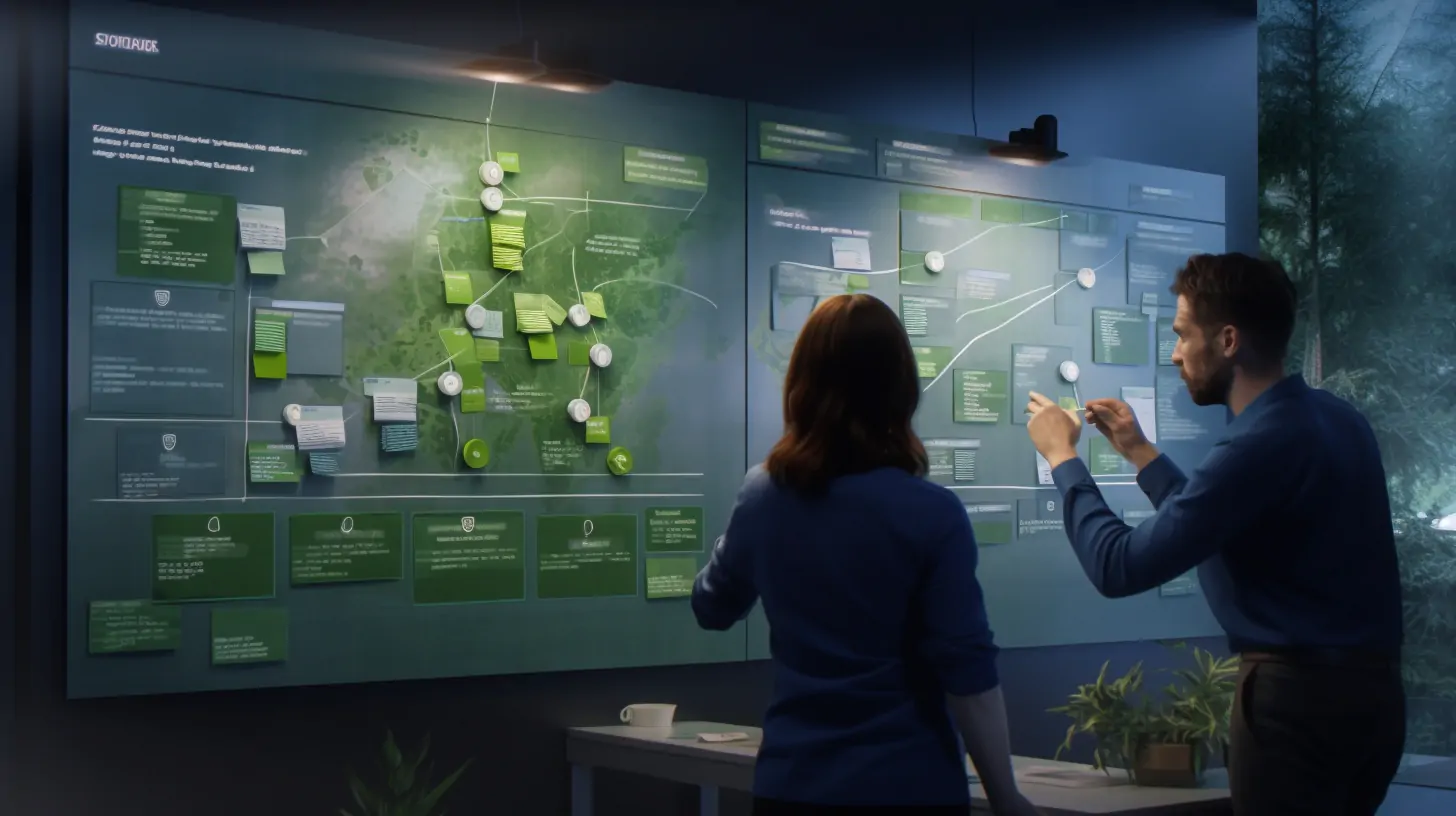Interesting statistics
According to reports from Western companies on the state of Kanban practices in the management system, the main reasons for adopting the Kanban method are the need to increase the transparency of work and continuous improvement. Therefore, discussing some benefits of using Kanban in modern companies makes sense.

Critical Benefits of Kanban:
Increased flow visibility;
Improved delivery speed;
Alignment between goals and performance;
Improved forecasting and planning;
Improved dependency management;
Increasing customer satisfaction.
Increased flow visibility
The main idea of the Kanban methodology is to visualize each part of the work. Thus, the Kanban board becomes a central information hub where everything is on one page. All tasks are visible, and they are never lost, which ensures the transparency of the entire workflow. Each team member can quickly get information about the status of each project or task.
Improved delivery speed
Kanban offers project managers several ways to monitor and analyze work allocation closely. Having a clear understanding of:
work items completed in a given period;
stages that take the most time;
easy to identify bottlenecks. This allows teams to address production flow alignment issues to improve workflow and delivery speed.
Alignment between business goals and execution
By promoting transparency, encouraging feedback, and regular review meetings, the Kanban method aligns a company's strategic goals with the day-to-day work of teams. This alignment between business direction and execution increases organizational agility. This allows teams to adapt to changing priorities within the strategy and inevitable reorganizations amid changing market or customer requirements.
Improved Predictability
Once work items pile up on the Kanban board, the line manager can better understand their process through flow metrics. Analyzing the time spent on workflow tasks (cycle time) allows you to raise expectations about how much work will be completed in the future. Understanding the consistency of delivery speed (throughput) will make forecasts more accurate and decisions based on reliable historical data.
Improved scaling and dependency management
Kanban's internal visualization practice applies when mapping and managing dependencies. The principle of "starting where you're doing now" means visualizing existing dependencies and managing the flow between them.
Dependency management provides insight into the current state of the workflow and ideas for improvement. On the other hand, it also provides complete transparency for the strategic management of the workflow and existing relationships between teams.
Increasing customer satisfaction
The origin of the Kanban method - more specifically, the pull system on which it is based - implies that a set of production tasks (works) is performed when there is demand. In other words, Kanban inevitably leads managers and participants in reducing waste since work is organized exclusively on tasks needed at a given moment. In addition, by applying visualization techniques and incorporating them into the work-in-process limitation process, the manager ensures that the result matches the client's expectations.
Exploring Kanban's Impact on Organizational Psychology
If you're like most knowledge workers, you've probably already come across "simple and straightforward" digital tools that, in practice, just add work. Knowing this, should you start using Kanban?
To understand this, ask yourself the following questions:
Does your brain always feel like it has a million tabs open?
Do you constantly switch from one task to another, struggling to focus on making progress?
Do you feel like you work non-stop but are never as productive as you would like?
Is your team struggling to communicate, causing issues like duplication of effort, defects, rework, and more?
If you answered yes to these questions, Kanban power might help you. Many knowledge workers find freedom through Kanban.
Today's workforce is armed with smartphones and tablets, but much information still comes in text. Text is everywhere. Between emails, chat messages, and formal and informal meetings, it can be difficult to keep track of what needs to be done and when. Although textual information is suitable for some instances, it is not a universal means of communication. The efficiency of perception of textual information is lower than we would like. Why?
For several reasons, a picture is worth a thousand words in the process of perception. The brain processes visual information 60,000 times faster than text.
40% of all nerve fibers associated with the brain are connected to the retina. Visual information provides 90% of the flow that enters our brains. This suggests that the brain prefers images over text.
In this sense, Kanban has become an excellent workflow visualization tool. Kanban takes information typically conveyed in words into simple, colorful brain candy. By turning all "tasks" into cards on the board, Kanban helps you clarify what's important and focus on the highest priority work. The Kanban board provides a shared visual space where everyone involved can find the latest information.
When used effectively, Kanban can significantly reduce the time teams spend in meetings dedicated to simple organizational or project reshuffling. This means that teams can spend more time doing things than discussing work.
Kanban standardizes signals and improves processes to help reduce waste and maximize value. Observing how the team's work proceeds allow reporting on the status and increase information exchange. It also improves resource delivery processes, improving the work context and, in some cases, making it more comfortable.
Therefore, from a psychological point of view, the introduction of Kanban practices, and especially the Kanban board as a means of visualization, is a way to improve the quality of work life of project team members, reducing irrational loads on the cognitive sphere and simplifying the tasks of perceiving and remembering work information.




